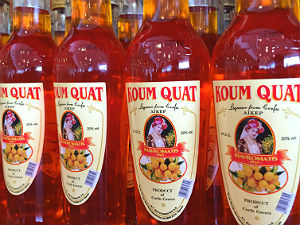Kam kwat (金橘) in Cantonese may well originate from kin-ku in Chinese. Translated it means 'golden orange' and it is the origin of the name of both the tree and the fruit called 'kumquat'. The tree grows to about four meters in height and is cultivated for its fruit but it is also a decorative indoor plant. Its leaves are dark green, bayonet shaped and its flowers similar to that of the orange tree. Its fruit is either round or oblong shaped depending on the variety and reaches a diameter of about four centimeters. When raw, its taste is tangy and bittersweet and the fruit is not particularly juicy.
The tree has been extensively cultivated on the Greek island of Corfu since its introduction in around 1860 by British botanist Sidney Merlin (1856–1952). He also introduced a variety of orange, the Washington Navel, to his estate on Corfu in 1925.
Today the kumquat, which has earned a PDO (Protected Designation of Origin) status in 1994, is mainly cultivated on northern Corfu near the village of Nimfes. Annual production amounts to about 140 tonnes.
Most of the crop ends up as liqueur, but the fruit is also used in cooking. It even finds its way into perfumes.
Kumquats are ideal for liqueurs, jams, marmelades and glyka tou koutaliou ('spoon sweets'), which is fruit in syrup. Koum Kuat of Corfu is a pleasant liqueur made from kumquat fruits, with an aroma and taste that resemble oranges and strawberries. It is produced exclusively on the island of Corfu.


No comments:
Post a Comment